Ipswich City Council has upgraded its Safe City public surveillance solution to Genetec Security Center and added Briefcam. The integration was undertaken by Elbex Access and Security.
IPSWICH City Council owns and manages one of the oldest and best known public surveillance systems in Australia. It was installed in 1994 and represented the best video surveillance technology of the day, including extremely capable Elbex EX2000 motorised PTZs, and multiple Elbex PTZ pendent domes.
The original system was installed by Council in response to rising street crime and the designers and operators of the Safe City solution were tasked with making Ipswich safer for its citizens. In partnership with Ipswich Police, and with unqualified long term support from Ipswich City Council, that goal has been well and truly realised for more than 2 decades.
Around 3 years ago it was decided that to open the Safe City solution to IP camera technology, as well as to bring Council’s adjacent security surveillance system into the Safe City control room, a new video management system was needed. After a 2-year testing period, Council chose to install Genetec Security Centre, a VMS designed from the ground up to be hardware agnostic. The Genetec Security Center solution was in the process of being upgraded to Version 5.2 SR9 when I visited, and will be upgraded to 5.3 shortly.
I took a tour of the Ipswich system with Larry Waite, Safe City security coordinator at Ipswich City Council and David Keidar, CTO of integrator, Elbex Access and Security. Both Waite and Keidar have an association with the site that stretches all the way back to that original installation and they express the same seamless ownership of its history and operation.
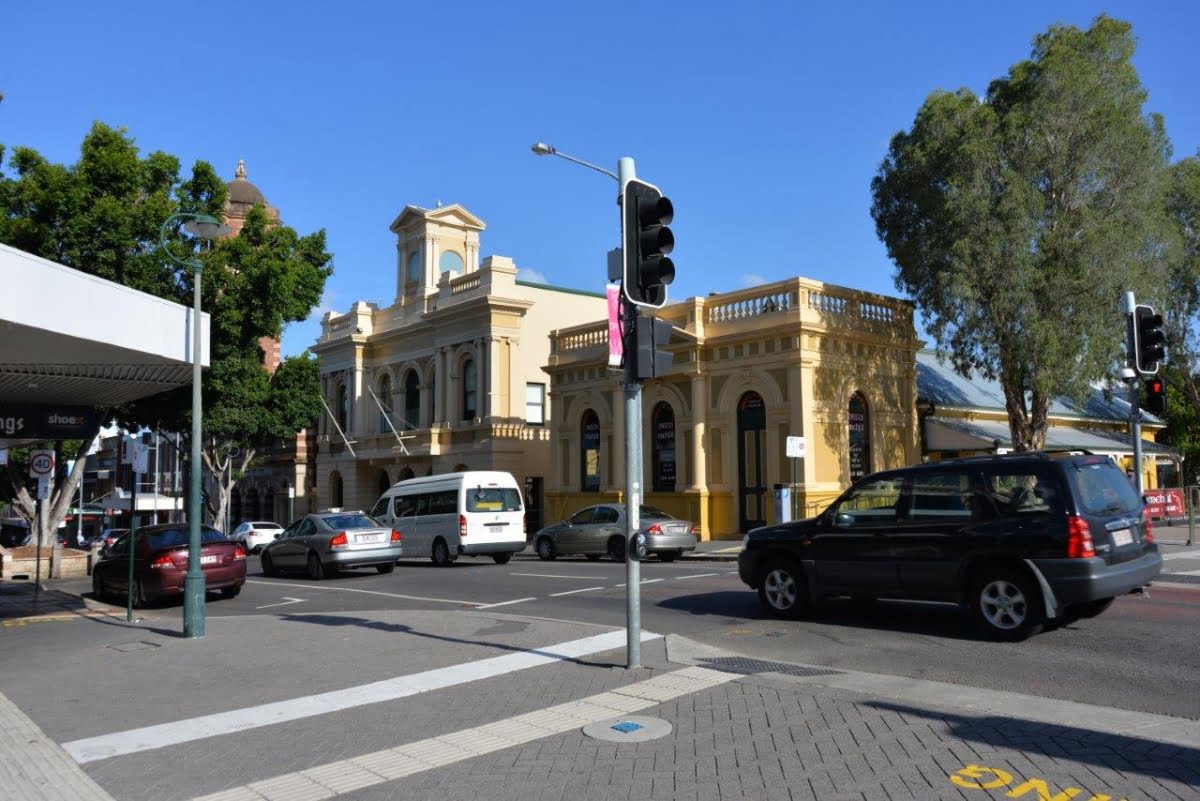
Waite first began working on the system as a supervising contractor in 1994, became contract manager for the site, then joined Council as an employee in 2011. His breadth of experience makes him an excellent guide. Managing a test bed as challenging and diverse as Safe City has rendered Waite a pure empiricist when it comes to claims about camera technology, and he has an holistic sense of technology and procedure. Nothing that fails to enhance the objective operational performance of the system will be integrated into the Safe City solution.
“We have 2 different systems, a Safe City system and Council’s 270 static security cameras, which monitor Ipswich Council’s infrastructure,” Waite tells me. “There are about 240 cameras in the Safe City system and the video signals come back to the Safe City control room on Council’s intranet, which is now mostly fibre and supports all Council’s network requirements.
“While we share a fibre for Council’s security camera video streams, for Safe City cameras we use our own dedicated Safe City fibre, which ensures we have no issues with bandwidth. The Safe City cameras are mainly PTZs and about 35 fixed cameras.
Fit for purpose
While Council’s static security cameras simply monitor council assets and infrastructure, the Safe City surveillance solution installed in public spaces is designed solely for public safety, for protecting the public and public property.
“Ipswich City Council owns and runs the Safe City system and the Safe City team is responsible to the committee of council – including the CEO and mayor,” explains Waite. “Also governing the system are a number of procedures that cover operations, and the retention and release of video.”
Footage from Safe City’s cameras can be viewed by police live or supplied in support of investigations and prosecutions. The symbiotic relationship between Safe City and Queensland Police Service goes back to the early days when the 2 shared an operations centre in Ipswich Mall. As well as assisting with investigations, the Safe City team also works in real time with police officers when required.
As part of this relationship there’s a memorandum of agreement between the City of Ipswich and Queensland Police Service in which each agrees to work to increase effectiveness of community policing, to identify long term preventative measures that reduce crime and improve safety, to recognise roles and accountabilities of individuals groups and agencies to provide a safer environment for all, and exchange information freely to address common concerns.
The Safe City upgrade
Safe City’s VMS upgrade and the integration of Council’s formerly separate security cameras into the Safe City control room is built around Council’s unprecedented fibre intranet, which stretches for tens of kilometres across the council area. The upgrade from the former video management solution to Genetec Security Center is designed to make Council device agnostic – not just to video surveillance cameras, but to any other devices Council may choose to incorporate into its solution in the future.
With the new VMS, changes on the perimeter of the system – new cameras or any other devices in the future – have no impact on the functionality of Genetec Security Center in the control room. Important, too, the new system means that as well as installing the latest IP cameras, Council can continue to leverage its existing analogue cameras, and deploy medium-term solutions such as HD-SDI technology, that use existing coaxial infrastructure.
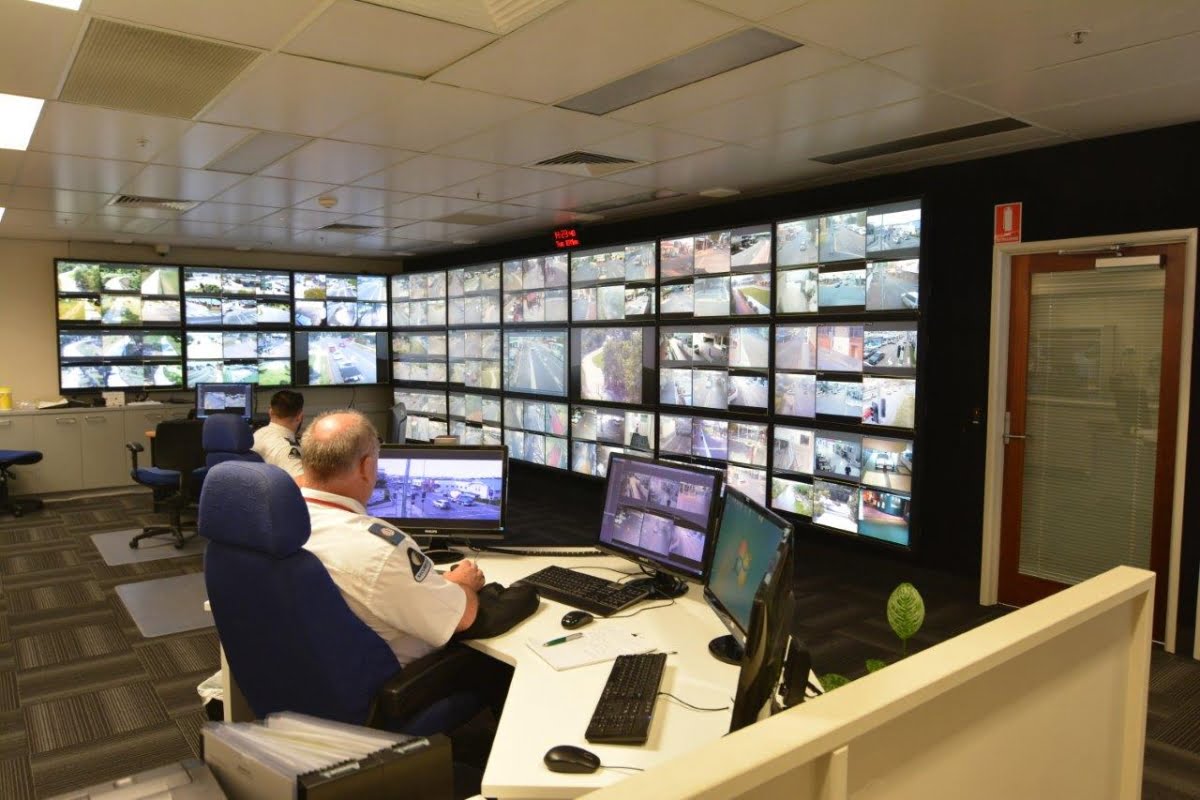
SafeCity Control Room
“We are in the process of phasing out all the analogue cameras – we must be getting close to 50 per cent,” Waite says. “There are more cameras arriving all the time to allow us to swap out the old cameras and move to IP. Currently, however, we have IP and legacy analogue. We run a bit of everything, including Panasonic, Pelco, Samsung, Bosch, Axis and the Elbex analogue cameras – I think we might even have some Ikegami cameras still in the system.”
Waite says a key part of preparing the system for the future involved selecting the right VMS.
“We spent 2 years trialling VMS solutions before deciding on Genetec – we set up a mini control room and tested different solutions over that time. It was an important decision. As well as an open solution, you obviously need a VMS that delivers more than just an image stream – it needs to access all the capabilities of your cameras.”
Given Safe City is a mature application comprising legacy technologies, it seems only natural there be a large number of analogue cameras working together with new HD PTZ cameras. As we chat my immediate thought is that Council is careful with budget but as Waite and Keidar discuss the system and, later on when I see applications of cutting edge technologies, I realise there’s something else at work here.
Same as all public surveillance solutions, Ipswich Council is a 24-hour site and the size and scope of its camera installation, the variability of light sources in Ipswich Mall, along major roads, and in backstreets, covered walkways and parklands, means that low light performance is not merely paramount but utterly central to core system functionality.
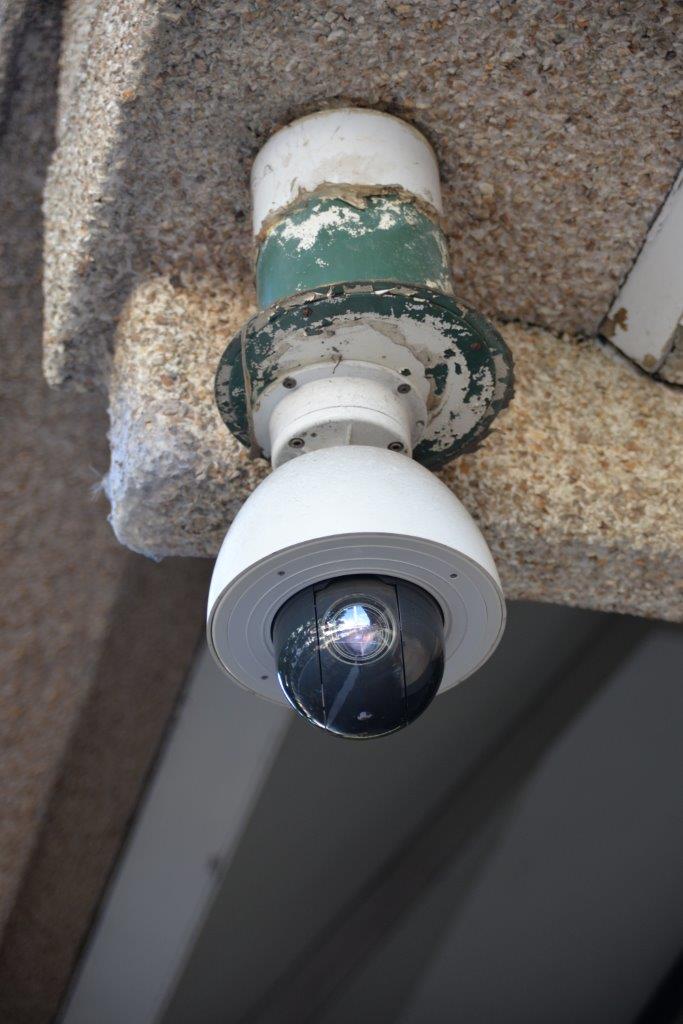
Elbex analogue PTZ
“Part of the reason it has taken so long for Ipswich City Council to undertake this process of upgrade is the strong low light performance of Elbex analogue PTZ cameras,” Keidar explains. “The cameras have a ½-inch sensor, good quality glass optics and a slow speed shutter, a combination which makes them very sensitive to low light.
“Over the years we have been constantly trying new cameras and we just could not find anything that performed as well throughout a 24-hour operational cycle as the existing Elbex cameras,” he says.
“The first HD camera that managed to break into the system was the Axis Q6044 720p HD PTZ. We are using 720p simply because in the real world it’s more sensitive in low light – we would love the higher resolution of 1080p HD but for our needs low light performance is paramount.
“The next HD camera we brought in was a Pelco PTZ, which you simply take out of the box, bolt to a wall and it runs, so in that sense it’s a very easy camera to use for an upgrade like this one,” Waite explains. “Pretty much every camera we could find we have tried in a 24-hour real time application and the process never ends because this system is large and always growing.”
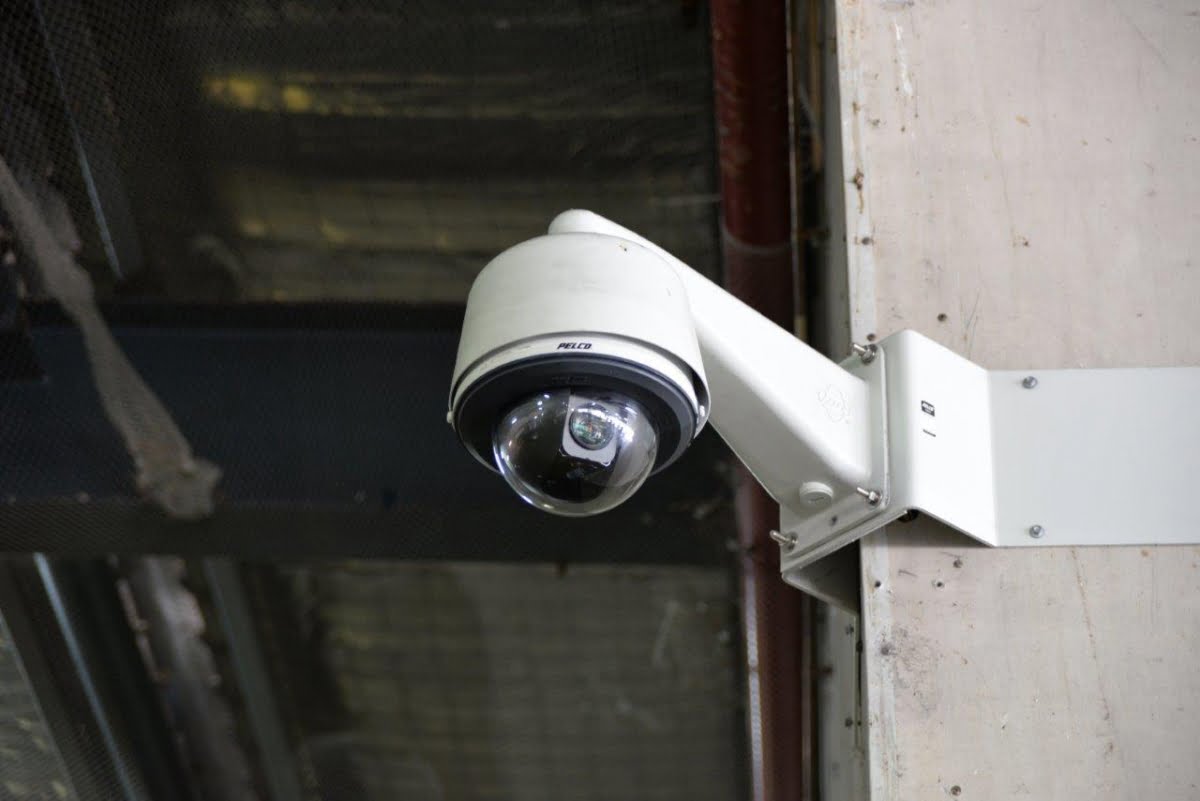
Because of the demanding nature of the site and its local and international reputation, Waite says there are plenty of quality manufacturers eager to supply cameras for the Safe City system.
“When it comes to technology, we never dive into anything – we’ve always sat back and waited to see what was available and to trial before we buy,” says Waite. “When things are applied in the real world, they may not work as well as they do on a stand at a trade show.
“Every salesperson says they have the best camera – no matter who you speak to they always have the best camera. Rather than getting in a debate with them, we ask for a sample, install it in the field and then tell manufacturers or suppliers how good their camera is from the perspective of our own application.”
Touring the system
While we talk, we’re driving around the streets of Ipswich and some things really stick out. The first is the huge geographical size of the application and second is the number of cameras – there are a lot of them, mostly PTZs.
Underlying both these parameters is the hidden power of that enormous fibre infrastructure. In other applications side-boring or wireless links might consume significant chunks of budget and demand intense planning but Council’s fibre foresight dissembles all those agonies into irrelevance.
As part of our tour, we hop out of the car and check out a number of camera pole installations. Some have an analogue PTZ and an IP fixed camera, another has a pair of analogue domes, one Bosch and one Elbex. They are ported into a nearby pit for power and comms, just as all the cameras are on this system.
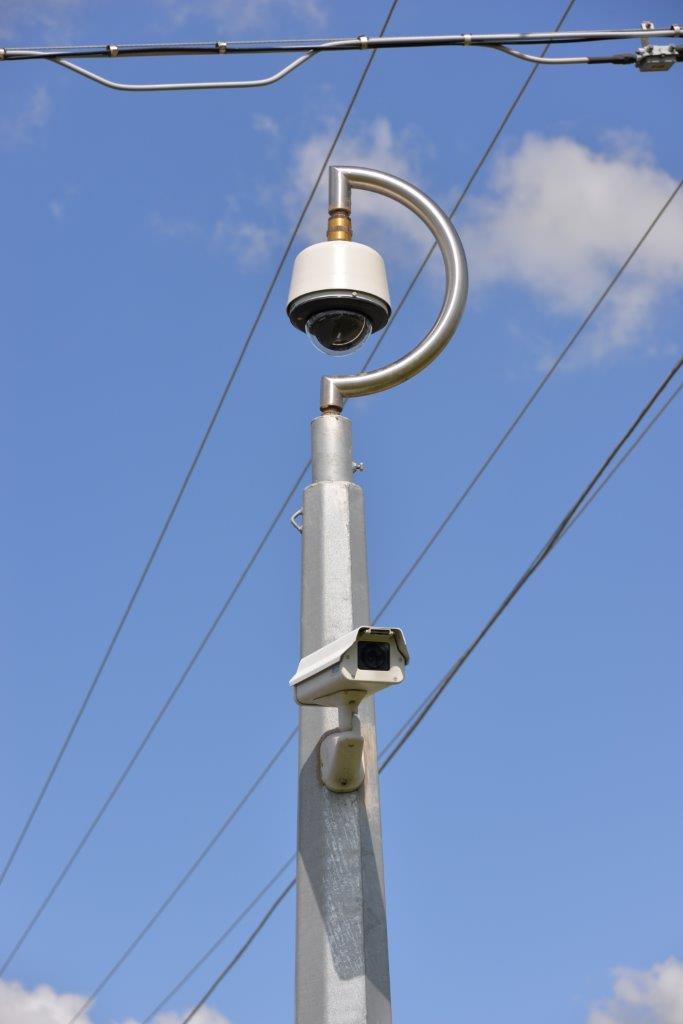
Custom camera poles
“There’s a pattern to the trenching for the cameras – the furthest camera is Rosewood, about 30km from here on the fibre LAN. That distance shows how extensive this solution actually is,” Waite tells me.
On Brisbane St we cruise past 11 camera and pole installations along a 2km stretch. Many of the dedicated camera poles have a Bosch static camera covering a nearby taxi rank or bus stop, as well as a PTZ, allowing 360-degree views for hundreds of metres in all directions. Cameras are thoughtfully located in areas of perceived public risk that are informed by experience and in cooperation with Queensland Police Service, which has been engaged with the project since its inception.
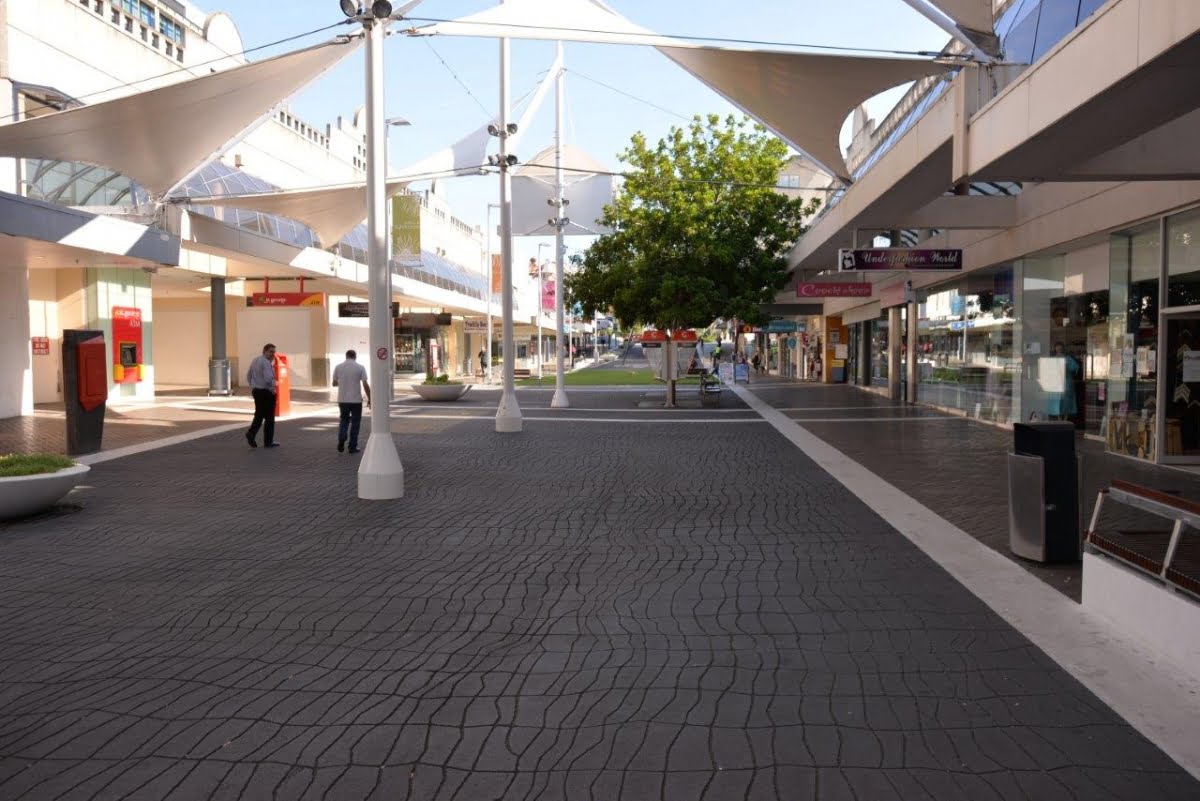
Later when we walk the CBD mall and adjacent side streets I’m doubly surprised by the number of cameras here and the fact many of them are Elbex analogue PTZs. Clearly, Safe City has had comprehensive coverage of the Ipswich CBD for many years. As well as the main mall and multiple key streets, locations like walking tracks and pathways over bridge are covered by multiple camera views. The bridge walkway is further supported by Help Points and a PA, which directly communicates with the Safe City Control Room.
The control room
The Safe City control room is accessed through a car park in a Council-owned building in the town centre. The site also supports security officers who patrol the city and the adjacent car park makes the location very convenient for this combined purpose.
While the control room was not built as a dedicated control room, it’s a very workable space – secure and large enough to contain administrative offices, the control room with its video wall and workstations, a large meeting room and a network room containing the decoders, switches and servers that support the system. The control room itself is large laterally and the video wall is enormous. This may not be the largest video wall in Australia but it’s big – I’ve not seen anything as big recently.

Walking into the Safe City control room you feel it’s a warm and friendly working environment and this opinion is only confirmed after spending a couple of hours with the team. You can also see it’s a working space – there are 2 operators on duty when we arrive and they go through what look to me to be a series of set procedures with quiet efficiency. Each of the workstations is set up with Genetec Security Center software and the viewer is familiar Genetec, everything is in easy reach of an operator’s mouse click.
It’s a measure of the capability of a VMS that it blends into the functionality of a control room’s operation and Security Center achieves this slick invisibility. Throughout my visit there’s not a single instance in which the management system sticks an awkward elbow into the face of the operators. Everything just works.
Having recently sat down with the latest version of this software, I’m acutely aware we are viewing the tip of an iceberg. Ipswich City Council’s future is now set up across CCTV, access control, intrusion and global integration of sub systems and business systems. Something else with Genetec is that there’s no annual per-channel license fee. Instead there’s a non-compulsory software maintenance agreement that entitles a user to direct support from Genetec and ongoing upgrades to the latest version. Nice.
As part of Safe City’s policy of actively engaging with cameras, Waite says operators are always using VMS functionality to actively search for incidents. This way of working the system is informed by long experience and is in part predicated on system size.
“If we had 250 image streams all touring at once it would drive operators crazy,” Waite explains. “We need to be more systematic than that. We found many years ago that once the system grew past a certain point the automatic tours were no longer working for us.
“Instead what we do is target hotspots based on our experience. At a given time of a certain day we will move cameras and park them to view particular locations where events have occurred in the past. We can do this in part because of the nature of Ipswich. In a major city, hotspots are not so predictable or easy to ascertain.
“From an operational point of view, I think of the cameras as a fishing net we throw over the city,” Waite says, narrowing his eyes thoughtfully.
“Every knot in the net is a camera – take cameras away and you create holes in the net, while strategically placing a camera will capture everything that moves in and out of a particular area. It’s a philosophy we’ve developed over many years based on observation.
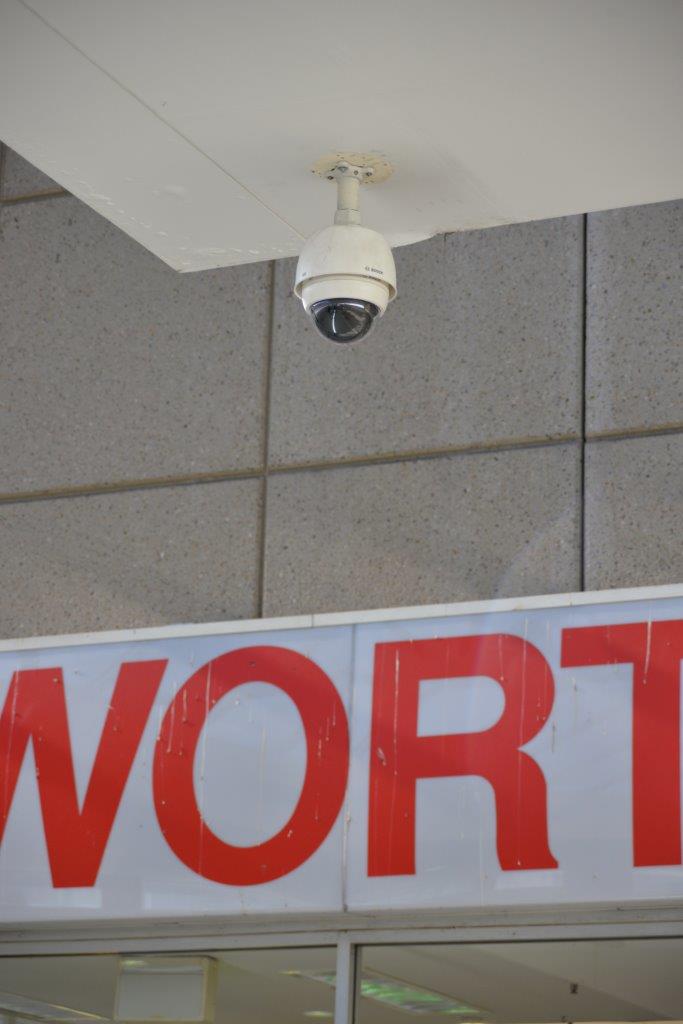
Bosch dome in the shopping centre
“Do police have access to Safe City video feeds or do your operators steer them to events in real time?” I ask.
“A little of both,” explains Waite. “You see those 2 large monitors in the centre of the display – those images can be sent through to the shift supervisor at the police station about 1km away, as well as to the police communication room about 5km away.
“We can also communicate over police radio and inform police of an event on screen and assist them in real time – but if they want to review or get copies of that footage then they need to come to us and follow one of 2 separate documentation processes. Certainly police appreciate the system and the courts love it because when faced with clear video evidence most perpetrators plead guilty, so cases are not dragged through the courts.”
With the upgrade to Genetec Security Center has come the capability to work more effectively with police officers when they are on patrol.
“We now have tablets that we can give to police so they have mobile footage of events in real time,” says Waite. “For instance, police can see all the cameras in the mall in a 9-screen split on a tablet. This allows police to see what’s going on in the next street over during the process of an operation.
“Using police radio, police officers can tell us who they are looking for and we can say – ‘they are on such and such street’. Police can then zoom in using the tablets to identify individuals and then take appropriate action to apprehend offenders. This new mobile component of the Genetec system is very flexible. We’ve only used it in the CBD with police so far, but it can be used in parks by our rangers, too.”
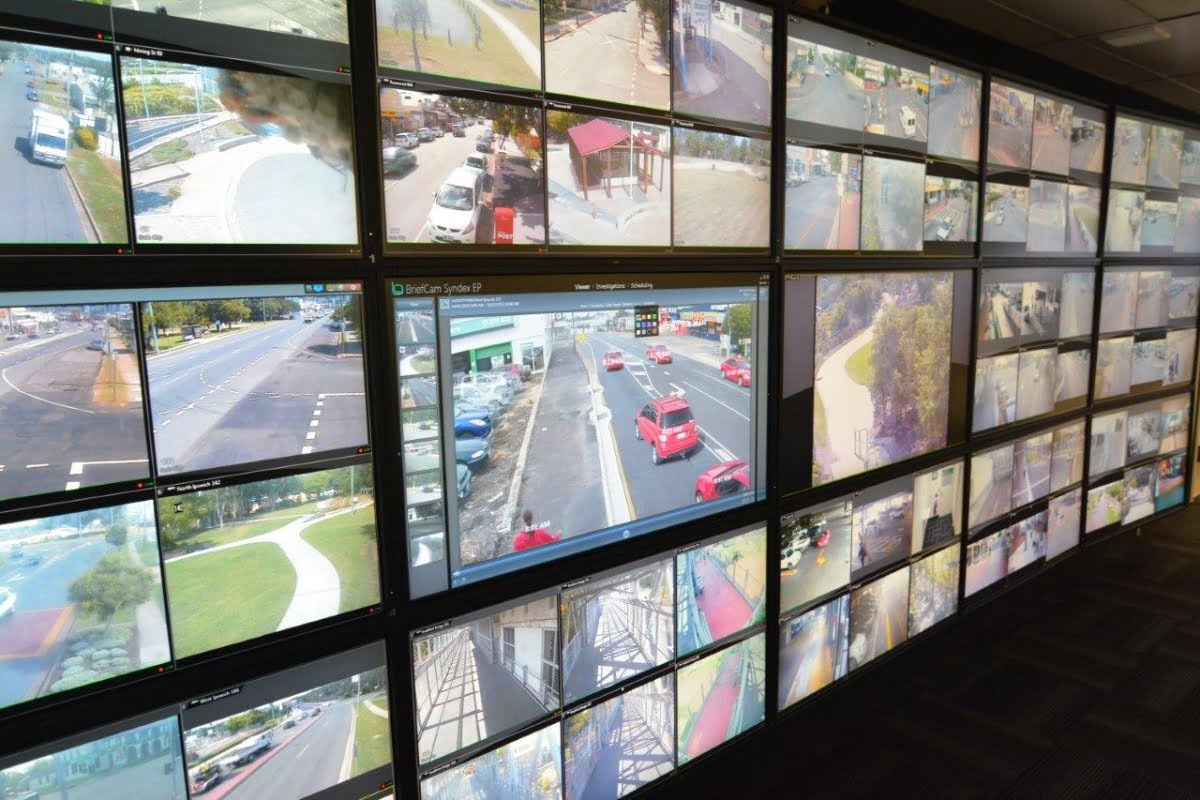
That’s Briefcam in the middle, displaying only this morning’s red cars (and jumpers)…
Smack in the middle of the video wall is something I’ve never seen in the wild – an application of Briefcam. For the uninitiated, BriefCam VS Forensics is a PC-based software solution that takes large video streams covering many hours of events and compresses them into seconds.
It goes without saying that for security teams on large sites with hundreds of cameras, the process of mining video streams searching for reported events can be a full-time job. Essentially, BriefCam’s VS Forensics solution synthesises events from real time video streams, presenting them as compact, overlaid progressions of events, which each event time-tagged.
Operationally, what this means is that an entire morning’s events can be compressed into 5 minutes of video, with events overlayed not quite on top of each other so the eye can see multiple persons and/or vehicles moving across the screen, each tagged with an event time. Operators simply select video clips based on time and appearance to play in real time. While Briefcam can be installed as a task in Genetec Security Center, at Safe City the solution runs independently, with operators pulling video streams into Briefcam whenever required.
According to Waite, Briefcam allows the team to ask it to only show green cars that have passed a camera, if that’s what they are looking for, or the red cars, based on the direction of travel and other parameters. As Waite explains, operator Justin processes a video stream of morning traffic through Briefcam to demonstrate and it’s flat-out amazing. Without any more than a minute’s delay, Briefcam serves up time-stamped footage of every red car that has passed the camera that morning, all overlaid on one composite image stream. It’s just awesome.
“Basically you set up the parameters and BriefCam goes to work compiling the footage using metadata and metatags,” says Waite. “You give BriefCam the camera and say ‘look for a particular thing over 12 hours’ and you go away and work on something else for 10 minutes and when you come back, the task has been completed. Briefcam sorts through the metadata and finds the footage on our servers and collects it on its own server. We can find the answers very fast – a stolen car or a missing child just using details like the colour of a shirt or hat.”

Briefcam chewing a day of data…
Waite says Safe City’s installation of Briefcam is part of a policy of applying technology that allows the control room operators to work at maximum efficiency.
“A key to our thinking with BriefCam is that we can’t keep adding more staff as the system grows each year – operators will be tripping over each other,” says Waite. “We need to start looking at smarter ways to do time consuming things and Briefcam really meets that demand. It certainly takes the time out of searching.
“We’ve only had the system for a couple of weeks so we are still getting used to it. Operationally, we installed it to allow us to keep an eye on events in some of the quiet areas we typically don’t have to monitor in real time but want to keep an eye on as efficiently as possible. We also plan to use Briefcam to help us manage our new waterpark. We think it will be a great help locating lost children – we can search for shirt colour, as well as searching on the basis of time.”
Waite can’t help revealing the experimental nature of the Safe City team. Even though the system has only just been installed, he’s already thinking about using it to empower more of the system.
“Briefcam is designed for use with static cameras not speed domes but I think if we leave a PTZ stationary then we think we can use it to run through all the events viewed by the PTZ for the period of time it’s parked,” he says with a grin. “It’s certainly our intention to find out if that’s the case.”
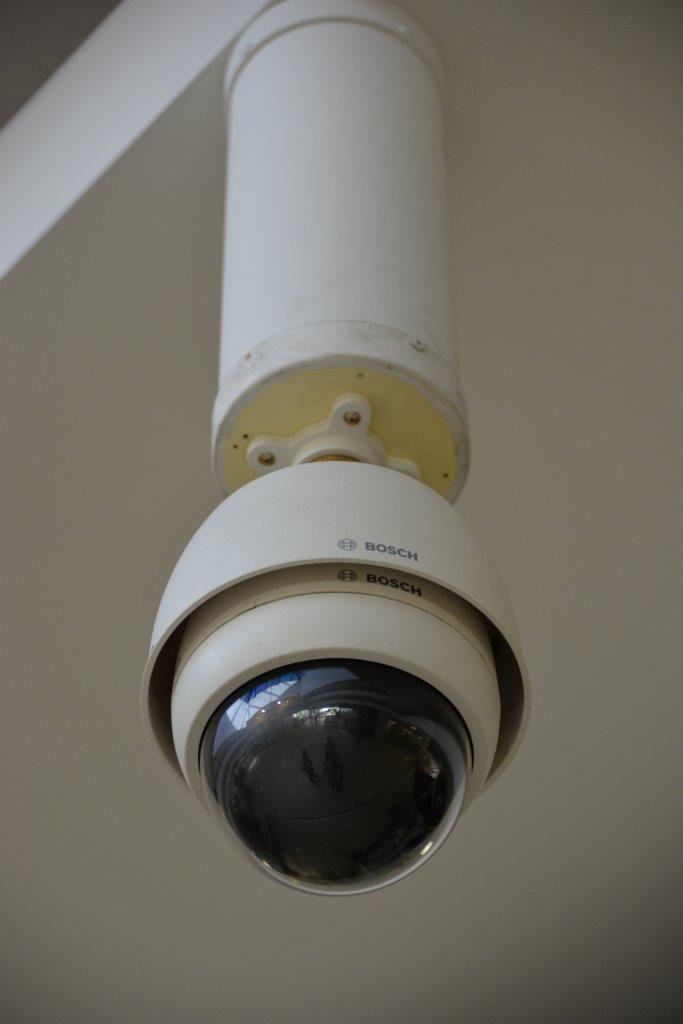
According to Keidar, the installation of Briefcam at Safe City has been as big a deal for the distributor as it is for the end user.
“When we went through the process of installing Briefcam it was an exciting first for them as well,” he says. “It’s an expensive solution but for an application that suits it, there’s nothing that fits this requirement as effectively.”
Waite agrees.
“Same as everything we install here, there was a long process of consideration with Briefcam,” he says. “We had previewed it in multiple ways. We looked at all the footage on Youtube, we read all the literature and then we got Hills in and they talked about what Briefcam could do for us.
“Within minutes of Briefcam being powered up and set to processing a video stream from one of our SafeCity cameras we all realised this solution was even more capable than we had thought. It’s just going to save a lot of time and that was the whole point of using it.”
While I’m in the control room I can’t help but ask the operators what they think of the new Genetec system. Both nod in agreement that it’s very good and Justin points out that the learning process has been relatively simple. It’s hard not to go sideways from there. In their experience, is HD better than analogue?
“In the daylight conditions, HD is great,” the boys tell me.
On the split screens of the video wall it’s hard to see higher resolution and what I find immediately interesting is how well the Elbex cameras are doing in terms of colour rendition and contrast. Then Justin calls up an Elbex camera on one of the big centre screens for comparison. We are all agreeing the image is nice when he pulls across an HD feed and oh yeah, there’s a big difference in resolution, colour, contrast.
Of course, these are the latest HD cameras, while the Elbex cameras are nearly 10 years old. And image quality during the day is only half the story. As we are viewing the cameras, operator Jeff surprises me by announcing quite unprompted: “You still can’t beat the Elbex cameras at night time.”
He’s not alone in his opinion. Justin agrees with alacrity.
“That’s true,” he says. “With that camera Elbex really got it right.”
“Would illumination levels be under 10 lux at night system-wide?” I ask.
“Yes – it’s definitely under 10 lux in many places at night,” Waite says. “But the video wall really does look spectacular at night – that’s the best time to see the screens. The performance of the cameras in this system after dark is fantastic. We do have a couple of parks where the scene is dull and other security camera locations where we turn lights off. But globally, performance is very good.”
“I have to ask on behalf of SEN readers – what’s your favourite camera in the system in terms of all round performance?” I ask.
According to Waite, that’s a tricky question to answer.
“Certain cameras give us strong performance in different ways,” he says. “The 720p Axis PTZ camera gives us the best images through a 24-hour period, while the Pelco PTZ is very good out of the box when it comes to easy installation. When it comes to the analogue and IP, the performance gap in favour of analogue at night has definitely closed over the last 18 months and it’s now going the other way.”
Waite also has some astute observations about the network demands of IP cameras in real world applications.
“There’s no doubt that bandwidth is an issue with digital,” he says. “We find that while analogue cameras might need 3-3.5Mbps, an IP camera will need 5-25Mbps, depending on how much movement is going on in the scene. Obviously, you can limit bandwidth demand but if you strip away the quality you lose the reason for the choosing HD in the first place.
“We also want 25ips in our application. People say you can’t see the difference between 12.5 and 25 with the naked eye but you definitely can. Given these conflicting needs, an IP video system is a competition for resources.
“As I explain it, all the resources of the system go into creating the best possible recordings and what resources are left over go to the video wall we are looking at,” Waite says. “This means that at times of system stress you get a flicker on the video wall that you don’t see on the real time recordings. It’s a balancing act but we are close to getting what we need. A resolution of 1080p HD is all we need here if the low light performance is good.”
It’s now late in the afternoon and looking at the video wall as the sun is sinking and the light is softening, images are definitely looking better. We’re losing hard shadows ISO is retreating to sensible levels and peace has been declared in the exposure wars which can impact on image quality as cameras struggle to balance areas of shadow and intense sunlight. This said, we’re now seeing some lens and dome bubble flare as the sun gets closer to the horizon.

Storage array and servers
Next, Waite shows me the server room. It’s a good space for the job, long and with enough access front and rear of the racks. Everything in the room relates to the Safe City solution – encoders, switches and servers. Fibres from the dedicated Council intranet come into the building’s riser, go into decoders in the server rack, through switches and flow to recording servers first, then via PCs (soon to be upgraded) to the video wall. Recording is at 25ips per channel in high definition with a 14-day retention time.
Because of the maturity of the Safe City application, there’s new and old hardware in the server room but it’s all now running the latest Genetec software.
“Something Genetec Security Centre does that’s extremely important to us is scale,” says Waite. “There is no limit in terms of growth and that’s excellent from our perspective. Every time we add more cameras we can just add more hard drives and expand the system.”
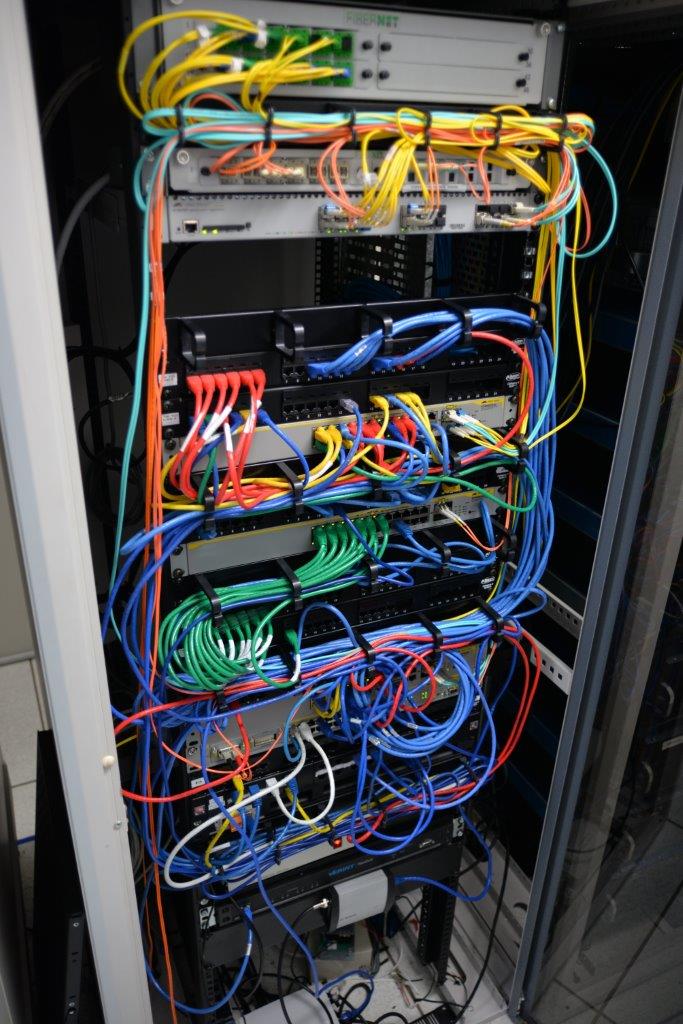
And the switches…
“What were the challenges the Safe City team needed to overcome during the process of upgrade?” I ask.
“There were some challenges,” Waite explains. “It can be challenging to configure a video wall so there’s no latency.”
Training was another area that needed careful attention.
“There were also some training challenges – some people embrace changes in technology better than others, it takes them less time to re-learn,” Waite explains. “It can take people a while to learn to think outside the box they are comfortable in, in this case to realise Genetec can do more than they are used to being able to do with another VMS.
“There have been instances where old procedures have been used – for instance, burning of footage to disk using third party software instead of dragging and dropping a video stream within Security Center itself. At the same time team has found and shared new ways to handle procedures that are much more efficient than the old ways.”
Success of the system
Given the longevity of this system and its mission to provide safety to the people of Ipswich, it’s not surprising Waite and the Safe City team have a strong sense it has made a difference to the community by modifying behaviour.
“This is system absolutely has had an impact,” Waite says. “There are a number of reasons for this, in my opinion. In Ipswich, while we have some tourism, most the people here are local so we know most of our offenders. Ipswich is not a capital city where there are unknown people coming in from all over Australia and all around the world, it’s more like a big country town.

It does feel just like a big country town…
“For these reasons the Safe City system has led to what is touted as a 78 per cent reduction in crime compared to the year before the system was installed, despite a much larger population. Crimes we used to get in Ipswich like bag snatches, car thefts, armed robbery and thefts at ATM machines – we simply don’t see those types of offenses anymore,” Waite says. “Instead the offenses we see are far less severe. They are alcohol related, opportunistic, school holiday muck-ups, mostly quite minor.
“Police are able to deal with recidivist offenders very quickly and more effectively, compared to a large city. If we see something occur, we may not know a person’s name but you can bet the police will, because it’s a small community.”
According to Waite, when it comes to a sense of safety, at lot of it is about perception.
“The public perception of danger might not reflect reality. For instance, we have groups who gather in the mall and are sometimes perceived as threatening. But the people who live and work in Ipswich know that while there may be certain groups who have the odd argument, they are socialising in the mall, not harassing the public. So part of the process is to focus on changing public perception into something more positive.”
Conclusion
The process of upgrading to Genetec Security Center has been about prepared for the future. What does that future hold? Waite believes that uncertainty about the future is the entire point of the upgrade.
“Who knows what’s going to happen in the next 12-18 months?” he asks. “At the moment our goal is to continue the process of going digital. Eventually we’ll take Council’s static camera system digital over a 5-10 year period, funds allowing. For instance, we added Genetec license plate recognition last week and we have it monitoring one street in Ipswich just to see how well it works.
“At this stage it seems to have some strong capabilities – especially from a police point of view in terms of helping to identify stolen cars and the like. It’s something we look at. Because we have the facilities and the fibre network, we can play with technologies and then get back to suppliers with honest feedback.
“Within our Safe City brief, we will continue to experiment with what technology is out there. We recently looked at a camera with a focusing long distance laser light, which we decided was not really suitable for what we do and we are currently testing some 360-degree 5MP cameras for Council retail applications. In some of our facilities we might have 7-8 cameras watching a retail counter, where a single 360-degree camera could handle the same task.
“Once you start going IP you can apply it to any number of devices, so we’ll be looking at ways to integrate other subsystems and devices into the system to increase functionality and efficiency,” Waite says. “We will never stop seeking clever new solutions that will make the Safe City system more efficient for staff and Ipswich safer for the public.” ♦
By John Adams









